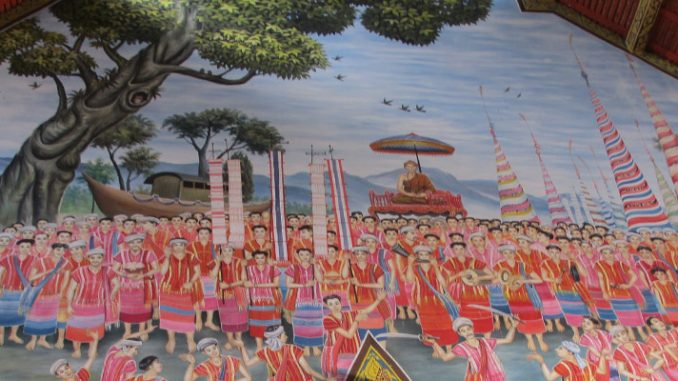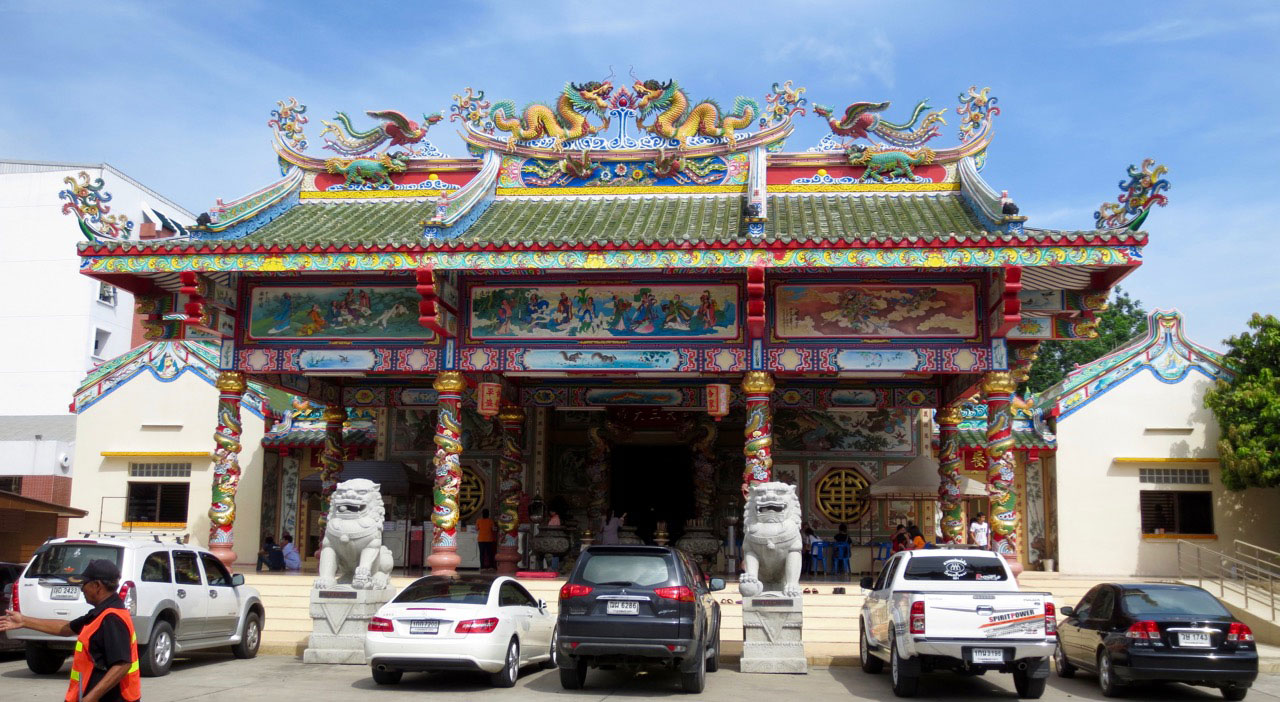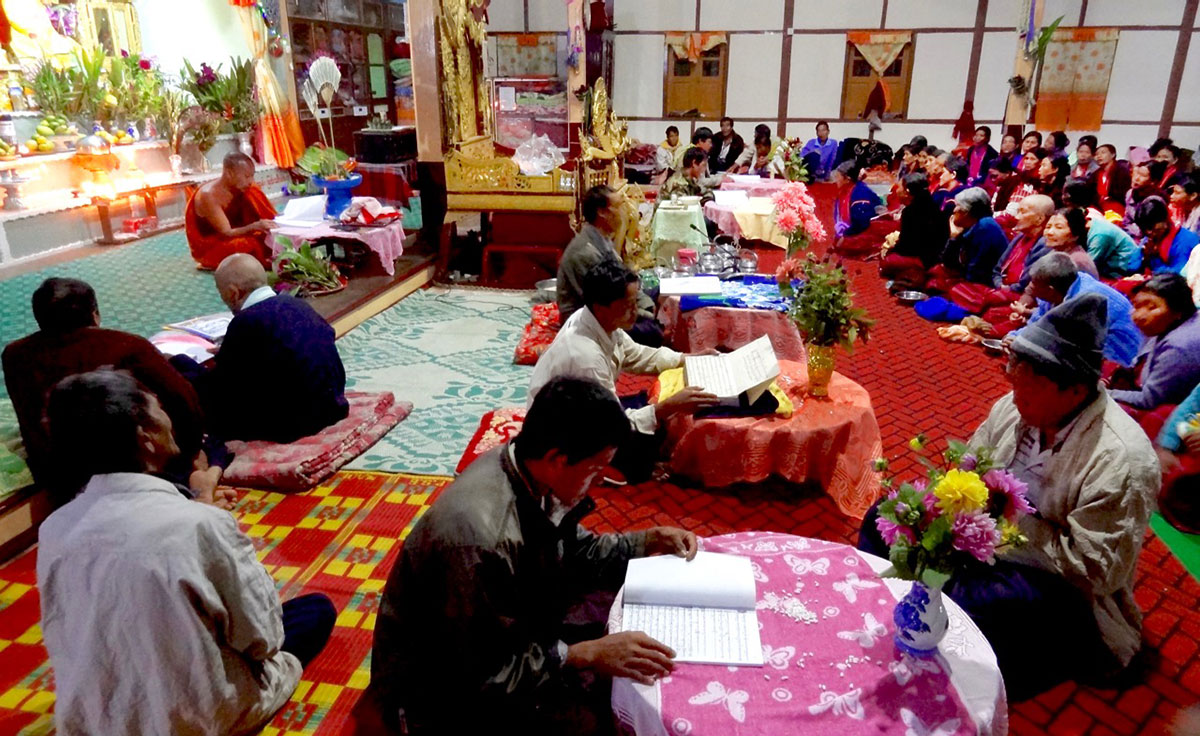
We have long been hearing about the degeneration of Buddhism in Thailand, most often accompanying scandals involving monks who deal with money, magic, or sex. Such realities are inevitably attributed to modernity or globalization. However, the relative decline of the Sangha as a state-sanctioned ecclesia does not necessarily mean the decline of religion in general. Rather, there is an emerging need on the part of scholars to provide more nuanced understanding of Southeast Asian religions by reconsidering not only perspectives that take for granted the institutionalized forms of religion of modern states but also the very concept of religion itself.
Religion, state and the centralized perspective
Our understanding of Theravada Buddhism, and religion more generally in Southeast Asia have been constrained by double blinders. The first has to do with the western-derived term “religion” itself. In non-western societies especially, the use of this term has been widely problematized because of its western origin and modern Christian bias (cf. Asad 1993). Southeast Asia is no exception. These questions have paved the way for critical approaches in the region to both the appropriation of the western concept of religion and the transformation of religions under western pressure. In contrast with the spontaneous rationalization and subsequent secularization in the history of Christianity, as repeatedly discussed by sociologists of religion such as Weber and Berger, in this region, it has been the colonial regime or post-colonial modernizing state power that has enforced rationalization, standardization, and institutionalization. State power has therefore been an inevitable and crucial factor in understanding religion in Southeast Asia.
The second is that major paradigms and perspectives in understanding Theravada Buddhism have derived from Thailand during the nation state-building process. This has in many ways shaped the ways in which we understand Theravada Buddhism, as well perhaps, as other religions in the region, and determined the course of our knowledge-building. Whether it is village Buddhism, Buddhism and spirit cults, the monastic organization in relation to forest monks, and kingship and state, all of these topics have emerged in large part from Thailand, where paradigms of understanding have focused on Buddhism and national integration. This has also affected the way in which minorities have been placed outside consideration in studies of Buddhism. Studies of Buddhism in the region had thus long been focusing primarily on the monastic institution and its relationship with the state, as well as the role of Buddhism in nation-building (Ishii 1986; Tambiah 1976).
For these reasons, the study of Buddhism in Thailand has privileged the elite ecclesiastical Buddhism, which, in fact, as McDaniel (2008) points out, has had only limited effect in standardizing Buddhist practice over the past century. Furthermore, Buddhism has been, in the nation-building endeavor, one central marker of “being Thai”. When minorities take up religions other than Buddhism, they are considered to be making the choice in order to mark their identity as non-Thai. Or, in cases where minorities practice Buddhism, it is deemed to be some heterodox version of it.
In a double sense, Buddhism has been seen from the center. It is seen from the ecclesiastical and often also state/royal center in the understanding of its organization and relationship with the state. It is also seen as the hierarchal epicenter of an entire syncretistic complex, constituting various elements definable as either “Buddhist” or “non-Buddhist”.
There have been repeated attempts to relativize this sangha-centered elitist perspective, but as far as the center-periphery composition is taken as given, elements of religion in the periphery have tended to be seen as resistance to the center, thereby reinforcing the center-periphery model of understanding. As long as we look at minority Buddhist practices as resistance to or antithesis of majority Buddhism, we are already re-inscribing the dichotomy and opposition between institutionalized state centered Buddhism vis-à-vis other minority religion.
Religion and triple borders
In this view ethnic categories become self-explanatory, self-contained units for understanding religious practices, dichotomizing Buddhist/non-Buddhist, majority/minority, or center/periphery and thereby excluding any perspective that crosses these supposedly distinct categories. Such an approach renders invisible and inexplicable the reality of Southeast Asian religions where religious practices and traditions cross over and constitute complex and overlapping layers. Rather, if we are looking at minority Buddhism, it must be in a way that fundamentally challenges the center-oriented perspective on Buddhism, and questions the ethnic and state division.
Over the past several years, a group of us in Japan have been looking at religion as practiced on the border or margins with the conviction that by focusing on religious dynamism taking place in the peripheries, we might question paradigms of the state-centered, institution-based religion. 1 “Border” here has triple implications: the geo-political border between states, the border of ethnicity (as well as between upland and lowland), and border between sangha and laity. A further hidden dimension, however, is that by probing deeply into these margins, we may begin to question the margins and contours of “religion” itself.

Ethnicity and religious practices
Geo-political and ethnic borders intersect, since ethnic minorities in the region inhabit areas that cross state boundaries. Thus, understanding such minorities could, due to their cross-border existence, potentially be basis for challenging state-centered perspectives. This point brings the realization that there are complex patterns of relationships between ethnic minorities, religion and the majority state that is irreducible to any simple equation.
Discussion based on fieldwork brings up complex realities which challenge the existing view that presume resistance from peripheries to the center, state sanctioned ethnic categories, and institutionalized religion. Among both the Palaung and the Pao in Upper Myanmar, what had hitherto been a complex multi-ethnic common religious space is becoming divided into ethnically defined small sanghas with each their own transliterated and translated texts in their respective languages (Kojima 2015; Murakami 2012; 2015). These have been accomplished through attempts to use the Palaung language in Buddhist texts, or through the founding of a Pao Sangha. Ironically, such moves have been instigated by the increasing mobility of their religious leaders and intellectuals who gain the opportunity to travel outside minority areas. In other words, the experience of border-crossing into areas beyond their ethnic locations paradoxically instigates the consolidation of ethnic boundaries by the institutionalization of their own ethnicity and languages in their religious practices, paralleling institutionalization among majority Buddhists.
In the past, the relationship between minorities and lowland states was deemed to be that of either “mimicry” or resistance. However, what these Palaung and Pao cases demonstrate is that experiences of the majority or state-centered lowland society can feedback into the minorities’ own Buddhist practices. The reality is far more dynamic than a simple subjugation/resistance alternative. What may seem like religious border-crossing or enclosure into minority ethnic divisions is, from the perspective of the practitioners, simply a way to improve their religious environment. It cautions us against unquestioningly presuming that cross-border mobility leads to opening up of ethnic divisions without paying attention to what this means for the religious practices of those actors themselves.
In examining the consolidation of ethnic category, religion can become a crucial issue. Ethnic consciousness among Karen in twentieth century Burma was found to have emerged in the course of redefining religion and Buddhism (Ikeda 2012). The Buddhist narrative of an emerging “Karen-ness” revises the widespread association of minorities with Christianity or other non-Buddhist religions in Burma. Meanwhile, examination of Chinese temples in Thailand throws light on the margin of state regulation on religion (Kataoka 2012). Followers of Chinese temples are identified as Buddhists in official statistics, yet the official status of their temples with their syncretic pantheons, is “non-religious.” Chinese temples, which have been ignored by the state religious administration, demonstrate the gap between the official definition of Buddhism and religion itself.
Here, it is clear that first of all, officially defined religion and officially registered ethnicity are never predictable or exactly corresponding. Ethno-religious relations are never straightforward, even when an ethnic group professes a specific faith, especially in the process of the redefinition of identity, religion and modern state-building. Moreover, the pursuit of minority religion can lead to reexamination of the boundaries of “religion” itself.
Religious borders
Looking at religious practices from the margins can lead to understanding Buddhism away from the institution-based constraints, closer to the ground and to the individual practitioners. Following the steps of charismatic monks such as Khruba Bunchum or U Thuzana among ethnic minorities across the border, some of us began to question existing views that too easily read resistance into minority religious movements (Hayami 2011; 2015; Kataoka 2015). Ultimately, these quests have led us to realize that once we examine religious practices on the ground, pro- or anti-state is often irrelevant. Rather, more important for the practitioners is whether the charismatic power they follow actually give them the protection and power they seek in their living situation.

Along the Thai-Myanmar border, many charismatic monks are enthusiastically worshipped by ethnic minorities. These monks operate in the interstice of states, providing alternative to these minorities. Yet often at the same time, the same monks are liaising with the ruling elite on either side of the border. It is this indiscriminate receptiveness to various supporters that allows them to move freely in the borderlands. In such cases, the question whether these charismatic monks relativize the state or strengthen state rule in the margins becomes irrelevant or even misleading. A simple alternative between submission or resistance by minorities to majority rule itself must be questioned. Such questions might be completely irrelevant for the followers. Religious practices in the periphery, then, is not simply or merely “weapons of the weak”, but must be considered in a completely different vein.
When we refer to religion crossing borders, it often means missionizing into areas where the religion is hitherto not practiced. In that sense, missionizing religion is an ultimate form of border-crossing (Tosa 2015). It means going into a realm where there is no institutional support or infrastructure for the religion in question. In this situation, the various taken-for-granted conditions for the support of a particular religion become questioned (imagine an evangelical monk who has to commit this-worldly economic activities for his own survival amidst a non-Buddhist mission field without lay supporters). Therefore, crossing border by religious practitioners could be an act of questioning the fundamental condition of that religious practice at its ultimate threshold. It implies, contradictorily, that the act of thatana-pyu (perfecting religion within and beyond one’s self, making religion, which includes missionizing) could risk breaking precepts. Thus, here again, the act of crossing borders leads us to probe into the contours of religion itself.
By asking questions about borders, marginalities and religious practices, we are driven to ask fundamental questions about religion. By following cross-border activities we arrive at a destination where the cross-border activities themselves retreat into the background and meta-level questions regarding Buddhism and religion, and what enables the constitution of religion is brought to the fore.
Delving into the field on the borders of states, of ethnicity, and of religious practices, we find approaches to “religion” that truly drive closer to the understanding of religious practice and question the relevance of ethnicity or state. Modernity and globalization is far from the end of religion of the people. Rather, it reinforces the aspect of religion as enabling everyday life in the face of the rigidified religious institutions and states. We are able both to see the complexity of living religious practices of the people on the one hand, and to question the contours of religion and religious practice itself.
Yoko Hayami and Tatsuki Kataoka
(Center for Southeast Asian Studies, Kyoto University)
Banner image: “Temple mural of Khruba Wong and his Karen devotees, Prabat Huai Tom, Amphoe Li” (photo by Y. Hayami)

Asad, Talal. 1993. Genealogies of Religion: Discipline and Reasons of Power in Christianity and Islam. Baltimore: Johns Hopkins University Press.
Hayami, Yoko 2011. “Pagodas and Prophets: Contesting Sacred Space and Power among Buddhist Karen in Karen State” Journal of Asian Studies.Vol.70 No.4. 1083-1105.
Hayami, Yoko 2015. “Pagoda Construction and saintly charisma: religious movements in the Thai-Myanmar border region.” (in Japanese) Tonan Ajia Kenkyu. 53:1:68-99.
Hayashi, Yukio (ed.) 2009. Kyo-iki no Jissen Shukyo: Tairikubu Tonan Ajia Chiiki to Shukyo no Toporojii (Practical Religion in the Border Regions: the Topology of Mainland Southeast Asia and Religion). Kyoto University Press
Ikeda, Kazuto 2012 “Two Versions of Buddhist Karen History of the Late British Colonial Period in Burma: Kayin Chronicle (1929) and Kuyin Great Chronicle (1931)” Southeast Asian Studies, 1:3:431–460.
Ishii, Yoneo. 1986. Sangha, State, and Society: Thai Buddhism in History. (translated by Peter
Hawkes) Honolulu: The University of Hawaii Press.
Kataoka, Tatsuki 2012. “Religion as Non-religion: The Place of Chinese Temples in Phuket, Southern Thailand” Southeast Asian Studies, 1:3:461–485.
Kataoka, Tatsuki 2015. “The Bunchum Worship movement on the hills: a Theravadin Charismatic monk and the Lahu” (in Japanese). Tonan Ajia Kenkyu 53:1:100-137.
Kataoka, Tatsuki (ed.) 2012. “De-Institutionalizing Religion in Southeast Asia”. Special Issue. Southeas Asian Studies. Vol.1. No.3.
Kataoka, Tatsuki (ed.) 2015. “Contemporary Southeast Asian Religions in Boundary-Crossing: Case Studies from Thailand and Myanmar” (in Japanese). Tonan Ajia Kenkyu.Vol.53. No.1.
Kojima, Takahiro. 2015. “The Migration of Palaung Buddhists and the Uniqueness of their Religious Practices: A Case Study from Namhsan, Northern Shan State, Myanmar.” (in Japanese) Tonan Ajia Kenkyu 53:1:9-43.
Murakami, Tadayoshi 2012 “Buddhism on the Border: Shan Buddhism and Transborder Migration in Northern Thailand” Southeast Asian Studies, 1:3:365–393.
——- 2015. “The Birth of “Pa-O Buddhism”? Buddhism and Identity of the Pa-O in the Shan State of Myanmar.” (in Japanese) Tonan Ajia Kenkyu. 53.1.44-67.
McDaniel, Justin 2008. Gathering Leaves and Lifting Words: Monastic Education in Laos and Thailand. Seattle: University of Washington Press.
Tambiah, S. J. 1976. World Conqueror and World Renouncer: A Study of Buddhism and Polity in Thailand against a Historical Background. Cambridge: Cambridge University Press.
Tosa, Keiko. 2015. “Pagoda construction and “Propagation of Sasana” Thathana pyu in Myanmar.” (in Japanese). Tonan Ajia Kenkkyu.
Notes:
- Some of the larger projects are: “Religions and Social Change in Mainland Southeast Asia and Southwestern China : Institutions, Corridors and Practices” led by Hayashi, Yukio (2003-2005); and “Comparative Study on Mainland Southeast Asian Religions in Border-crossing” led by Kataoka, Tatsuki (2010-2012).” Some of the outcomes of these projects are: Hayashi, Yukio (ed.) 2009.; Kataoka (ed.) 2012 and Kataoka (ed.)2015. ↩
